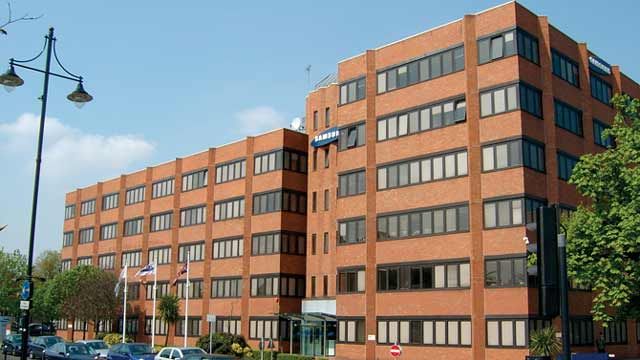Samsung UK Develops 4G Wireless Systems with Simulink
“Simulink enables us to easily share proposals and knowledge with other design centers. Simulink also allows us to focus on algorithm design and perform state-of-art mathematical analysis, assessment, simulation, and optimization.”
Challenge
Solution
Results
- Ramp-up time minimized
- Aggressive deadlines met
- Platform for collaborative development established

The Advanced Technology Group (ATG) in the Samsung Electronics Research Institute (SERI) in London is at the forefront of the effort to unify baseband algorithm development and advance physical layer research for 4G wireless technologies.
As part of this effort, SERI is involved with industry-wide research projects in the European Union (EU) Framework Programme to develop a new wireless system concept that will improve peak data rate, latency, spectrum efficiency, and coverage while reducing cost.
SERI has standardized on Simulink® to unify baseband algorithm development and physical layer research and is working within a consortium to establish an integrated software library for wireless applications.
“Simulink provides an easy-to-use environment that enables efficient development, debugging, and testing for wireless communication technology,” explains Dr. Thierry Lestable, senior researcher at SERI. “It also provides a comprehensive set of blocksets and promotes improved quality and increased code reuse between designs.”
Challenge
SERI needed a development platform that enhanced and streamlined the group’s data analysis, algorithm development, and simulation capabilities, along with facilitating cross-organizational collaboration. They also needed to compare and integrate their physical layer transmission chains.
SERI faced a tight schedule imposed by the consortium for producing simulation results for proposed technologies.
“To meet strict project deadlines, we need to maintain intellectual property developed by multiple sources within our team,” Lestable explains. “Additionally, on our EU projects, we need a common software platform and library to simplify interfacing with and integrating contributions from other consortium members.”
Solution
SERI standardized on MathWorks tools to develop their next-generation wireless technologies. They’re also migrating all their existing algorithms to Simulink to facilitate their reuse in future development initiatives.
With limited experience with Simulink, SERI worked with MathWorks Consulting to accelerate this transition.
The ATG uses Simulink to develop algorithms and to create models of 4G communications systems. They use Communications Toolbox™ and DSP System Toolbox™ to speed their model development.
The team also uses Simulink to integrate C and C++ code into their simulations. By integrating custom code, they can include algorithms from other consortium partners and their own proprietary optimized implementations of algorithms once the generic models are complete. Their own algorithms will ultimately become part of SERI’s patent portfolio.
SERI uses MATLAB® for statistical analysis and graphical plotting to better visualize and understand system behavior and experimental data. They generate sets of BER curves for their Simulink models with MATLAB scripts to understand the effect of variables and to quantify the merits of competing technologies. For multiple-carrier code division multiple access (MC-CDMA), this enables them to assess the robustness of various detection algorithms to multiple access interference.
During the calibration phase of the project, in which all partners contributing to physical layer research compare their results using a set of predetermined scenarios, SERI relies on Simulink and Communications Toolbox.
The team also uses DSP System Toolbox to develop advanced encoding algorithms, such as low-density parity check (LDPC) coding.
The ATG researchers use Simulink to develop new interference-cancellation algorithms using soft information obtained from several coding schemes and LDPC. After obtaining reference data from single- and multi-user detection scenarios, the researchers apply advanced channel coding to implement the interference-cancelling loop.
The ATG is approaching completion of the entire MC-CDMA assessment at the physical level.
Results
- Ramp-up time minimized. “Within one week of using Simulink for the first time, we finished the first complete transmission chain simulation. Within three weeks, we completed the full multi-carrier transmission chains including MC-CDMA and COFDM,” says Lestable.
- Aggressive deadlines met. “Using Simulink, we have consistently completed development milestones and deadlines ahead of target—significantly ahead in our MC-CDMA development,” explains Lestable.
- Platform for collaborative development established. “Because all the researchers within ATG use MATLAB and Simulink, it’s easy to share work and maintain applications,” explains Lestable. “Also, Simulink helps us interface with other Samsung offices and partners on EU projects because we can integrate their contributions under Simulink.”